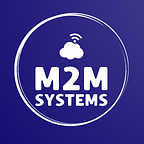A needle in a haystack: Device Hub and the digital device avalanche
More than 400 5G devices have been launched, with 300 more expected in the near term. Across all technologies we are experiencing an avalanche of devices hitting the market. No wonder it is difficult to find the right device for the job — arguably, it’s the ‘needle in the haystack’ challenge for the digital age. Does Device Hub provide the solution?
Today, more and more activities are performed online in ‘digital rooms.’ Classrooms, stores, meetings, medical consultations are just several examples of how the digital space is becoming an integral part of everyday life. The digital era is not only changing how we interact with one another, it is also surrounding us with increasing levels of connectivity. In fact, more than 400 5G devices have been launched with 300 more expected in the near term.
Market demand for communications
But it didn’t take long before this ‘Wi-Fi saturation’ caused equipment limitation and the bandwidth reached its capacity. This resulted in more consumers using relying on their mobile internet connection, which in many cases is faster than the speeds they experience through their home internet service, especially in countries where 5G networks have been deployed, either as a standalone (SA) or non-standalone (NSA).
The previously accepted home internet speeds ended up not being able to handle this overload of connections and devices. Essentially, the information was not being transferred as speedily as demanded, especially by the bandwidth-hungry video applications. As a result, mobile communication service providers (CSPs) had to support the required capacity. This increased demand for low-latency high bandwidth connections is clearly visible in user attitudes towards 5G which is seen as the technology that can alleviate some of the issues they are experiencing today.
And while mobile CSPs experienced a slowdown in retail sales and roaming revenues due to the worldwide travel bans and restrictions, their voice and data services have become even more relevant. This has seen growth not only in mobility, but also accelerated effort to improve their offerings. This has resulted in a business transformation designed to not only cover the current demand level, but also to help them be more prepared for the expected level of service requirements after the pandemic — especially in relation to the volume of industries that are transitioning their operations and ways of working, such as a flexible and remote workforce, and virtual learning for all education levels.
Challenges for Device Manufacturers
Even though the demand for devices has increased globally, both in the consumer and industrial environments, these devices still need to go through the required regulatory, industry and country certifications before they can be commercialized.
Even before the pandemic, the testing and certification processes requirements for commercializing a device in any given country were complex and, in many cases, unbeknown to by newcomer connected-device vendors. While experienced device manufacturers are well aware of how complex the process is, they are not the majority of manufacturers, especially in the Internet of Things (IoT) space.
Unfortunately, once the effects of the pandemic started to roll in, many telecommunications regulatory office worldwide experienced closures. This resulted in an even more complex commercialization process. Many countries had to rely on test reports from other regions that didn’t cover all the required standards. All these factors impacted on a products commercialization time plan and created a chain reaction that caused further delays for the regulatory and industry bodies — especially as it was not easy to determine who to contact in order to obtain support, especially for manufacturers targeting different and remote market regions. In some countries this process used to take six to eight weeks but during the pandemic it has taken nine to ten months and disrupted some markets. Knowing the process and providing the correct information and documentation helped avoid even further delays.
The mobile device ecosystem beyond the pandemic
While the end of the pandemic seems close in certain countries, the reality is that on a global scale there are still many challenges for all the players in the wireless and mobile industry, including device manufacturers, communications service providers and test laboratories. However, eventually the situation will improve on a global scale and some areas are likely to be changed/improved post pandemic due to all the lessons we have learnt. For example, networks have become more resilient and secure, autonomous vehicles are used for delivery and commercial transportation, remote workplaces and virtual experiences in different verticals, such as enterprise use cases, gaming, finance and health.
Bridging the gap through a global ecosystem, the M2M Systems Device Hub.
The Device Hub, a global database for device manufacturers, devices, communications service providers and test labs, provides a new centralized and interactive web tool for each party in the industry. This tool not only makes it easy to search and find devices, but also to determine the counterparts of each company based on their business, technical or commercial needs.
Some examples of features and usages of the Device Hub portal include:
- Easily requesting a testing and certification service quote from the device manufacturer via the portal.
- communications service providers can search for and find specific industrial IoT or 5G devices for their enterprise customers
- test laboratories can offer tracking and alerting of certifications renewals
- Device manufacturers can perform a simple bench marking against potential competitors in a secure and private way and use the portal as their own database to monitor and track the launch of their devices on a global scale.
The Device Hub provides a practicable and unique solution for every party in the wireless and mobile industry to facilitate the long journey from R&D to commercialization. As a result, Device Hub will continue to rapidly grow even after the global pandemic.
